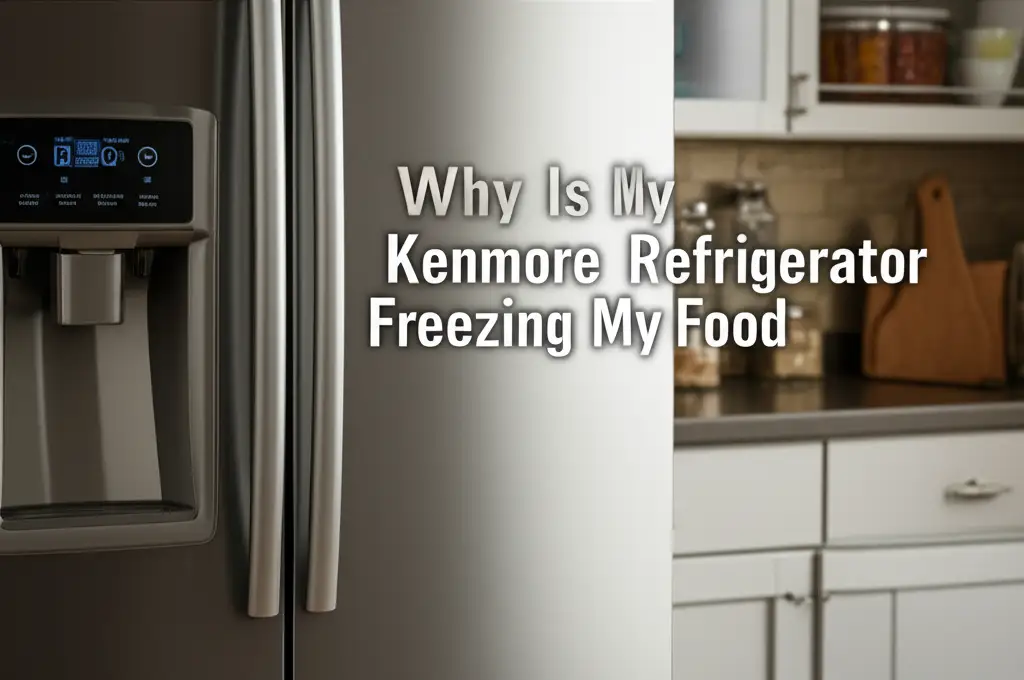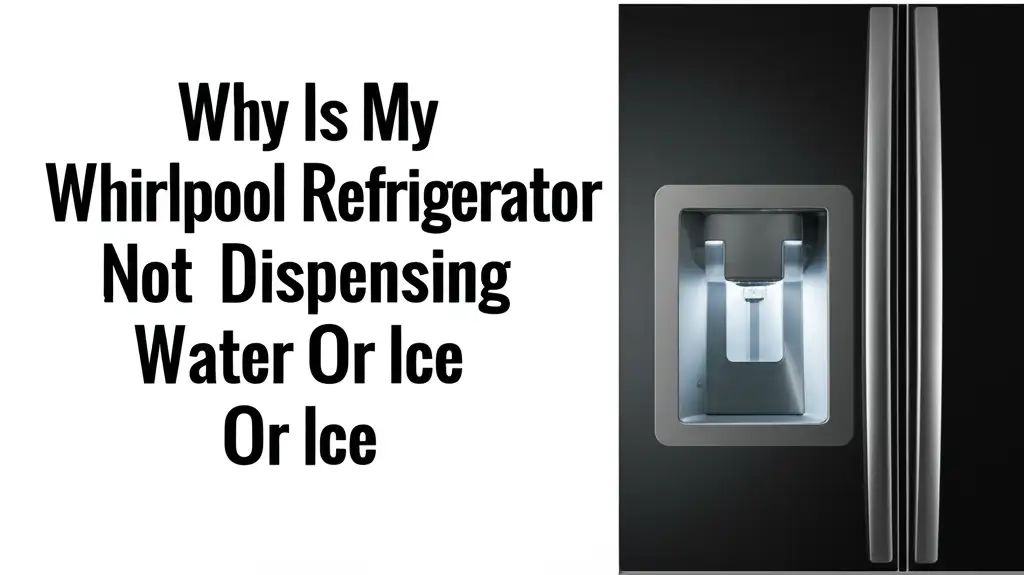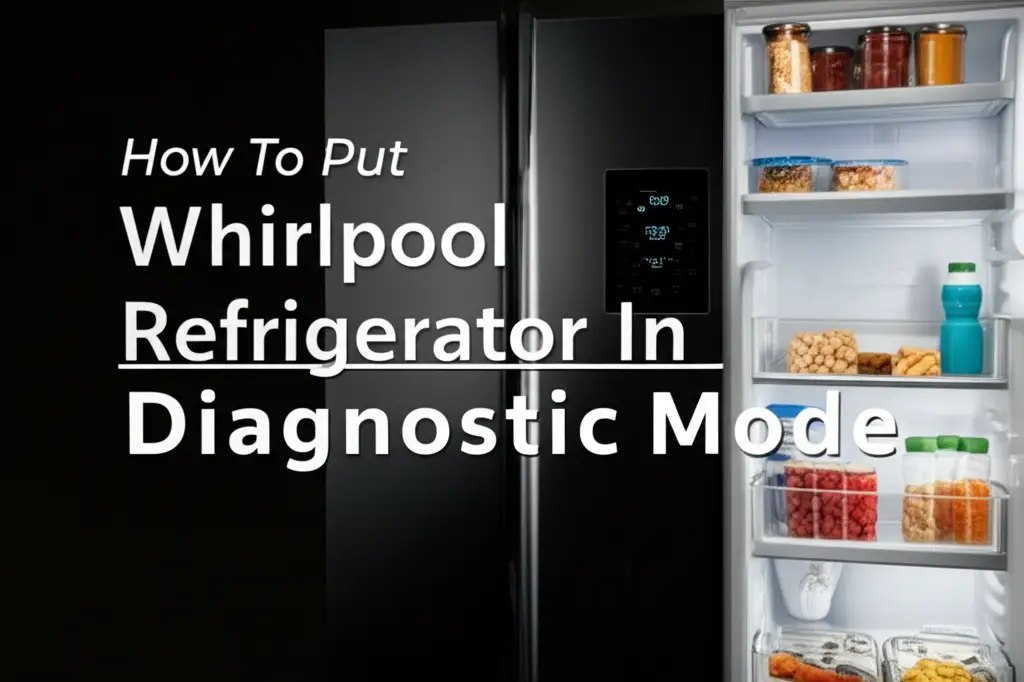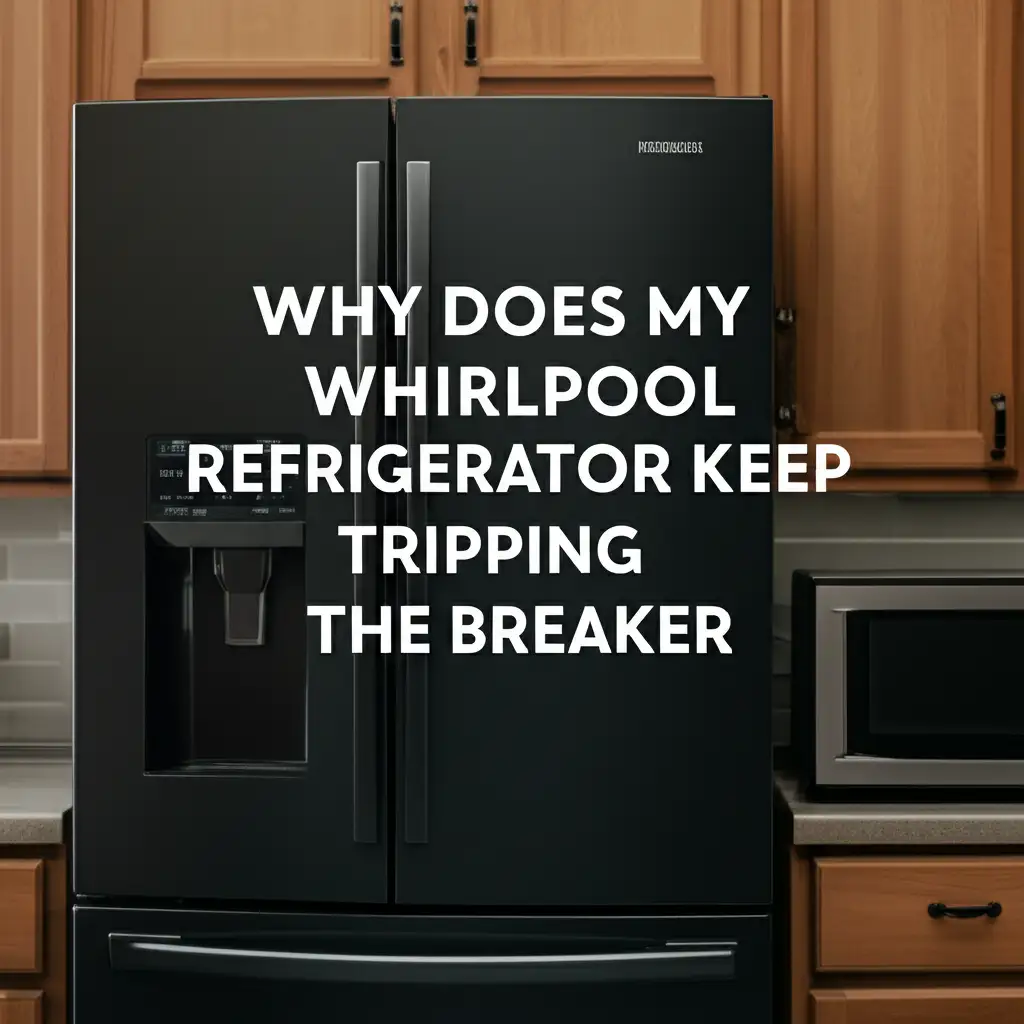· Katria Melrose · Appliance Repair · 15 min read
Why Is My Side By Side Refrigerator Not Cooling
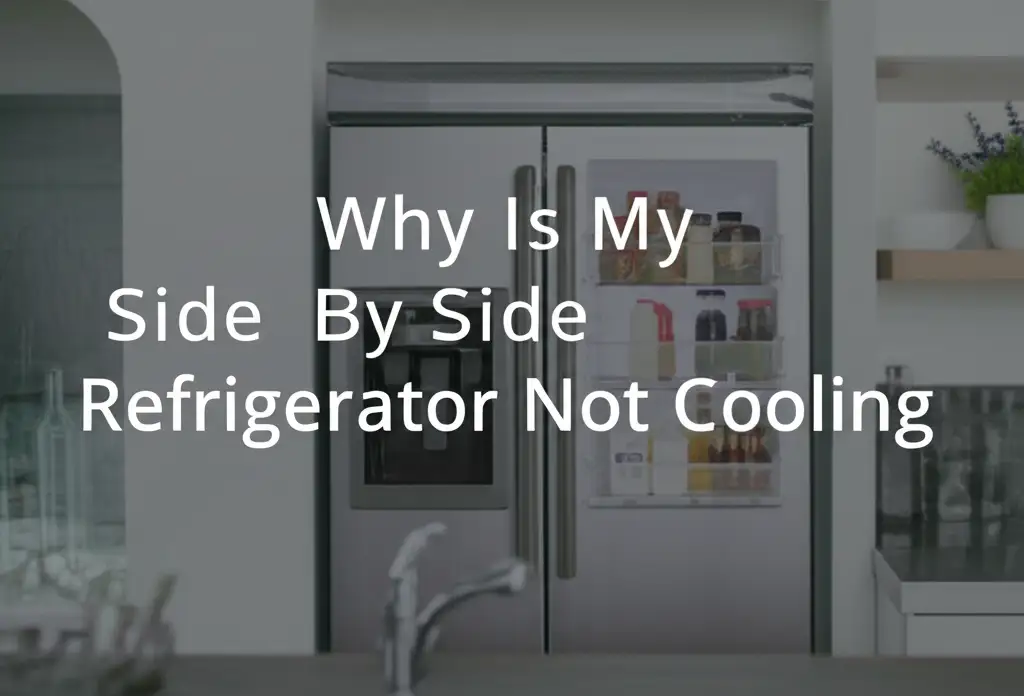
Troubleshooting Your Side-by-Side Refrigerator’s Cooling Issue
Imagine opening your side-by-side refrigerator, expecting a refreshing blast of cold air, only to feel warmth. This is a frustrating moment. A side-by-side refrigerator not cooling properly puts your food at risk. It also causes worry about costly repairs. I know this feeling well. Many common issues cause a fridge to stop cooling.
You do not need to panic. Most problems have simple fixes. This article will guide you through key diagnostic steps. We will explore everything from basic checks to more complex component failures. Understanding these common reasons helps you identify the problem. You might fix the issue yourself. This guide helps you save money and keep your food fresh.
Takeaway:
- Check Basics First: Ensure power, proper temperature settings, and clear vents.
- Maintain Cleanliness: Regularly clean condenser coils and clear obstructions.
- Listen for Sounds: Fan motors and compressors make distinct noises when failing.
- Inspect for Ice: Excessive ice buildup indicates defrost system problems.
- Call a Pro for Complex Issues: Compressor, sealed system, or refrigerant leaks need expert help.
A side-by-side refrigerator stops cooling for various reasons, including dirty condenser coils, a faulty evaporator fan, or problems with the defrost system. Other causes involve a malfunctioning compressor, a broken damper, or issues with the door seals. Identifying the exact cause helps you decide if a DIY fix or professional repair is needed.
Initial Checks: Power, Settings, and Placement
Sometimes, the simplest explanations are the correct ones. Before you dive into complex diagnostics, always start with the basics. Check your side-by-side refrigerator’s power supply and settings. These simple steps can often resolve a no-cooling issue quickly.
First, ensure your refrigerator has power. Check if the power cord is firmly plugged into a working outlet. A loose plug can stop your side-by-side refrigerator from cooling. Also, check your home’s circuit breaker. A tripped breaker will cut power to the fridge. Reset the breaker if it is off. Make sure the outlet itself works by plugging in a small appliance.
Next, verify the temperature settings. Someone might have accidentally changed them. Your refrigerator might be in “demo mode” or “showroom mode.” This mode often lights up the interior but disables cooling. If your KitchenAid refrigerator displays a “refrigeration cooling is off” message, it is likely in this mode. You can find instructions on how to disable it in your appliance manual or through online resources like this guide on why your KitchenAid refrigerator says refrigeration cooling is off. Confirm both the freezer and fresh food compartments are set to appropriate temperatures. The freezer should be at 0°F (-18°C) and the fresh food section at 37°F (3°C).
Finally, consider the refrigerator’s placement and the door seals. The fridge needs proper air circulation around it. Leave a few inches of space between the back and sides of the refrigerator and the walls. Blocked vents or insufficient clearance can hinder cooling efficiency. Also, inspect the door gaskets. Worn or damaged door seals let warm air into the refrigerator. This makes the cooling system work harder and fail to keep food cold. You can test seals by closing the door on a dollar bill. If you can pull the bill out easily, the seal is weak.
Dirty Condenser Coils: A Common Cooling Blocker
Dirty condenser coils are a leading cause of a side-by-side refrigerator not cooling. These coils sit on the back or bottom of your refrigerator. They release heat from the refrigerant into the room. When dust, dirt, and pet hair cover these coils, they cannot dissipate heat effectively. This makes the compressor work harder.
An overworked compressor heats up. It uses more energy. Eventually, it may fail to cool the refrigerator properly. I have seen many cases where a simple cleaning solved a major cooling problem. Cleaning your condenser coils is a simple maintenance task. It greatly improves your refrigerator’s efficiency. It also extends its lifespan.
To clean the coils, first unplug your refrigerator for safety. Locate the coils, usually behind a grille at the bottom or on the back. Use a coil brush or a vacuum cleaner with a brush attachment. Carefully remove all accumulated dust and debris. This process can be quite messy, so it helps to have a vacuum ready. For more detailed instructions, you can refer to guides like how to clean refrigerator coils or how to clean under a refrigerator.
Regular cleaning of these coils is important. Experts recommend cleaning them at least once a year. If you have pets that shed a lot, clean them more often. Dirty coils strain your refrigerator’s cooling system. This leads to higher energy bills. It also causes the side-by-side refrigerator to not cool as it should.
Evaporator Fan Motor: Air Circulation is Key
The evaporator fan motor plays a vital role in cooling your side-by-side refrigerator. It is usually located in the freezer compartment. This fan pulls air over the evaporator coils, which contain cold refrigerant. It then circulates this chilled air throughout both the freezer and fresh food compartments. If the evaporator fan motor fails, cold air cannot circulate. This means your freezer might stay cold, but your fresh food section will warm up. This is a common reason why your side-by-side refrigerator is not cooling.
You can often diagnose a faulty evaporator fan by listening. Open the freezer door. If you do not hear the fan running, it might be broken. Sometimes, ice buildup can obstruct the fan blades. This causes a loud buzzing or clicking noise. If you hear such noises, inspect the fan. You may need to defrost the freezer manually to clear the ice. Unplug the unit. Leave the doors open for several hours. This allows all ice to melt.
A broken evaporator fan motor requires replacement. This task can be tricky. It involves accessing the rear panel of the freezer compartment. You need to disconnect wires and unscrew mounting brackets. Ensure you purchase the correct part for your specific side-by-side refrigerator model. If you are uncomfortable with electrical repairs, consider hiring a professional. Proper air circulation is key to keeping both sections of your side-by-side refrigerator at the right temperature. Without it, your fridge will struggle to maintain coolness.
Defrost System Failure: Ice Buildup Stops Cooling
A common reason a side-by-side refrigerator stops cooling is a problem with its automatic defrost system. Refrigerators generate frost on the evaporator coils during normal operation. The defrost system melts this frost periodically. This prevents ice buildup. If the defrost heater, defrost thermostat, or defrost timer fails, ice will accumulate on the evaporator coils. This ice acts as an insulator. It prevents the coils from absorbing heat from the refrigerator compartment.
When the evaporator coils are covered in ice, cold air cannot be produced effectively. The freezer might still feel cold due to the ice itself, but the refrigerator section will likely warm up. You might even notice your side-by-side refrigerator freezing up in certain areas, particularly around the air vents. Excessive ice buildup can restrict airflow. This prevents proper cooling throughout the fresh food compartment. You might observe ice on the back wall of your freezer. This is a strong indicator of a defrost system issue.
Troubleshooting the defrost system involves checking several components. The defrost heater melts the ice. The defrost thermostat monitors the coil temperature and activates the heater. The defrost timer or control board initiates the defrost cycle. A multimeter can test the continuity of the heater and thermostat. If any of these parts fail, the entire defrost process stops. If your side-by-side refrigerator is not cooling because of too much ice, a professional appliance technician can properly diagnose and replace the faulty defrost component. They have the right tools and expertise for this complex repair.
Damper Control Malfunction: Uneven Temperature Distribution
Your side-by-side refrigerator relies on precise airflow to maintain different temperatures. The damper control is a crucial component in this system. It regulates the flow of cold air from the freezer into the fresh food compartment. If the damper control malfunctions, it can disrupt this balance. This often results in the fresh food section becoming warm while the freezer remains cold. This is a specific issue where your side-by-side refrigerator is not cooling effectively on one side.
The damper can be a mechanical or electronic part. It opens and closes to allow cold air through. If it gets stuck in a closed position, cold air cannot reach the fresh food section. This causes the refrigerator side to warm up. Conversely, if it gets stuck open, the fresh food section might become too cold, possibly freezing items. This indicates an uneven distribution of cooling. You may find that your GE refrigerator is not cooling but the freezer is working, or similar issues with other brands like Frigidaire or KitchenAid. These problems often point to a damper issue. You can read more about brand-specific issues, such as why your GE refrigerator is not cooling but the freezer is working.
You might be able to inspect the damper yourself. It is usually located near the top of the fresh food compartment, where air enters from the freezer. Look for any obstructions or signs of damage. Sometimes, a simple blockage prevents it from opening fully. However, if the damper itself is faulty, it will need replacement. This often requires disassembling parts of the refrigerator’s interior. A professional technician can diagnose a faulty damper control accurately. They can ensure the right part is ordered and installed correctly. This restores balanced cooling to both compartments.
Compressor and Start Relay: The Heart of the Cooling System
The compressor is arguably the most vital component in your side-by-side refrigerator’s cooling system. It is the heart that pumps refrigerant through the system. The compressor compresses the refrigerant gas, increasing its temperature and pressure. This pressurized gas then releases heat as it cools down and expands. If the compressor fails, your side-by-side refrigerator will stop cooling entirely. It cannot initiate the cooling cycle.
You might hear an unusual clicking sound when the compressor tries to start but fails. This sound often comes from the start relay. The start relay provides a jolt of electricity to the compressor to get it going. If the start relay is faulty, the compressor may not start at all. The relay clicks as it attempts to engage the compressor. A common test for the start relay involves removing it and shaking it. If you hear rattling, it is likely defective.
A compressor problem usually means a major repair. Symptoms of a bad compressor include the refrigerator not cooling at all, a loud buzzing or humming noise, or no noise from the compressor when it should be running. The compressor itself is a sealed unit. Replacing it is a complex job. It requires specialized tools and technical knowledge. Refrigerant handling rules apply to such repairs.
If you suspect a compressor or start relay issue, it is best to call a qualified appliance technician. They can accurately diagnose the problem. They also have the necessary equipment to safely replace these parts. Attempting to replace a compressor or handle refrigerant yourself can be dangerous. It can also cause further damage to your side-by-side refrigerator.
Condenser Fan Motor Issues: Protecting the Compressor
The condenser fan motor works closely with the condenser coils and compressor. It is usually located near the compressor at the bottom rear of your side-by-side refrigerator. Its job is to pull air over the condenser coils. This helps to cool the hot refrigerant. It also helps cool the compressor itself. If this fan motor fails, heat builds up. The compressor will overheat and eventually shut down. This causes your side-by-side refrigerator to not cool.
You can often tell if the condenser fan motor is failing by listening. Pull the refrigerator away from the wall. Listen near the bottom rear. If the fan is not spinning, or if it makes loud grinding or squealing noises, it might be faulty. Sometimes, debris can get lodged in the fan blades. This prevents them from spinning freely. Check for any obstructions. Clear them if present.
When the condenser fan motor stops working, the entire cooling system becomes inefficient. The compressor cannot dissipate its heat effectively. This leads to reduced cooling performance. In severe cases, the compressor might burn out due to excessive heat. Replacing the condenser fan motor is a repair you might perform yourself. First, unplug the refrigerator. Access the fan motor by removing the back or bottom panel. Carefully disconnect the wiring harness. Unscrew the mounting bolts.
Ensure you replace it with an exact part for your side-by-side refrigerator model. This replacement is less complex than a compressor job. However, if you are unsure, calling a professional is always a safe bet. A working condenser fan is vital for the long-term health and efficiency of your refrigerator.
Refrigerant Leaks and Sealed System Problems: When to Call a Pro
The cooling process in your side-by-side refrigerator depends on a sealed system containing refrigerant. Refrigerant is a chemical compound that absorbs heat from inside the fridge and releases it outside. If there is a leak in this sealed system, refrigerant can escape. When refrigerant levels drop, the refrigerator loses its ability to cool. This is a serious issue. It means your side-by-side refrigerator is not cooling because the core of its cooling mechanism is compromised.
Symptoms of a refrigerant leak are subtle. You might notice a gradual decrease in cooling performance. The compressor might run constantly but the fridge stays warm. You may also hear a faint hissing sound or see oily residue near the coils. However, refrigerant is colorless and odorless. So, visual confirmation is rare. A major leak will cause your refrigerator to stop cooling completely.
Diagnosing a sealed system leak requires specialized tools. Technicians use leak detectors to pinpoint the exact location of the leak. Repairing a sealed system involves patching the leak, evacuating the old refrigerant, and then recharging the system with new refrigerant. This process is complex. It must follow strict environmental regulations. It also requires specific training. You cannot legally or safely perform this repair yourself.
If you suspect a refrigerant leak or a sealed system problem, it is time to call a qualified appliance technician. They have the expertise and the proper equipment to handle refrigerants safely. They can identify the leak, repair it, and recharge your side-by-side refrigerator’s system. This type of repair is typically expensive. It often makes you consider the age of your refrigerator. If the fridge is very old, replacement might be more cost-effective than sealed system repair.
FAQ Section
Q1: Why is my side-by-side refrigerator making a buzzing noise but not cooling?
A buzzing noise from your side-by-side refrigerator when it is not cooling often points to a faulty compressor or a bad start relay. The buzzing might be the compressor struggling to start. It could also be the start relay trying to engage the compressor. Check if the compressor is hot to the touch. This indicates it is trying to run but failing.
Q2: How long should I wait for my side-by-side refrigerator to cool after cleaning coils?
After cleaning the condenser coils, allow your side-by-side refrigerator at least 4-8 hours to return to optimal cooling. The system needs time to recover and distribute cold air evenly. Avoid opening the doors frequently during this period. This allows the temperature to stabilize faster. If it does not cool after 8 hours, other issues might be present.
Q3: Can I fix a side-by-side refrigerator not cooling if the freezer works?
Yes, often. If your freezer works but the fresh food section of your side-by-side refrigerator does not cool, common culprits include a faulty damper control, a blocked air vent, or a malfunctioning evaporator fan. These issues prevent cold air from reaching the fresh food compartment. Checking and clearing obstructions or replacing the damper can often resolve this.
Q4: What are the signs of a failing refrigerator compressor?
Signs of a failing refrigerator compressor include the unit not cooling at all, a loud clicking or buzzing noise when it tries to start, or constant running without cooling. The compressor might also feel extremely hot to the touch. Sometimes, no noise at all indicates a complete failure. These issues usually require professional repair.
Q5: How often should I clean my side-by-side refrigerator’s condenser coils?
You should clean your side-by-side refrigerator’s condenser coils at least once a year. If you have pets that shed a lot or a dusty home, consider cleaning them every six months. Regular cleaning prevents dust buildup. This ensures efficient heat exchange. It also helps your side-by-side refrigerator cool properly and last longer.
Q6: Is it worth repairing an old side-by-side refrigerator that is not cooling?
Deciding whether to repair or replace an old side-by-side refrigerator depends on the repair cost versus replacement cost. For major issues like a sealed system leak or compressor failure, replacement might be more economical for older units. Simple fixes like cleaning coils or replacing a fan motor are usually worth it. Consider the refrigerator’s age and overall condition.
Conclusion
Finding your side-by-side refrigerator not cooling can be stressful. We have explored many common reasons for this problem. From simple fixes like checking power and cleaning coils to more complex issues like fan failures, defrost system malfunctions, or even compressor problems, you now have a roadmap. I hope this guide helps you diagnose what is wrong. You can often solve these issues yourself. This saves you money on repair bills.
Remember, start with the easiest solutions first. Check the power. Look at the temperature settings. Clean those dusty condenser coils. These steps often fix the issue. If the problem persists, systematically check the fans, defrost system, and air dampers. If you suspect a serious problem like a compressor failure or a refrigerant leak, it is best to call a qualified appliance repair technician. These repairs are complex and require specialized knowledge.
By understanding these common issues, you are better equipped to handle a side-by-side refrigerator that is not cooling. Regular maintenance, like cleaning the coils, prevents many problems before they start. Keep your appliance running efficiently. Keep your food fresh and safe. If you need help, contact a local appliance repair service. They can provide expert assistance and get your side-by-side refrigerator cooling again quickly.
- side-by-side refrigerator
- refrigerator repair
- fridge not cooling
- appliance troubleshooting
- refrigerator maintenance


